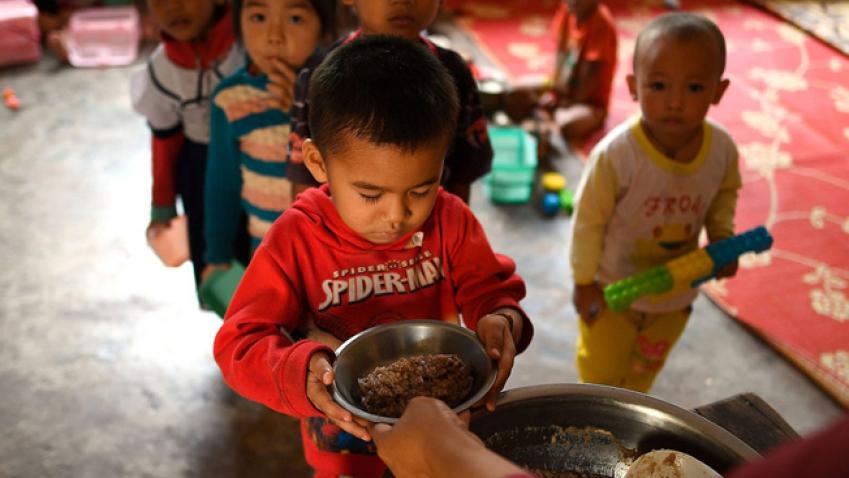UN: world hunger shows no sign of decreasing, especially in Asia
On the continent, the percentage of people afflicted by food insecurity and malnutrition has stabilised at 8.1 percent. After Africa, the highest levels of food insecurity are in South Asia. According to the FAO, today's data are comparable to those of 2008-09 and the goal of Zero Hunger appears unattainable by 2030.
Milan (AsiaNews) – Some 733 million people suffered from hunger last year, that is one person in 11, 152 million more than in the pre-pandemic period (2019).
This is the third consecutive year that the number is not decreasing, remaining “stubbornly unchanged”, this according to a report on The State of Food Security and Nutrition in the World (SOFI) released today by the Food and Agriculture Organisation of the United Nations (FAO) and four other agencies.
The document, presented in Rio de Janeiro, Brazil – the country that holds the rotating presidency of the G20 this year – underscores the fact that the fight against hunger has suffered a 15-year setback.
Undernourishment levels are comparable to those of 2008-09 and the Sustainable Development Goal of Zero Hunger appears unachievable by 2030, despite some improvements in specific areas, like breastfeeding or stunted children.
Instead, if current trends continue, 582 million people will be chronically undernourished by the end of the decade, 130 million more than in the pre-COVID-19 period.
At the regional level, there are wide variations. In Asia, the percentage of people afflicted by food insecurity and malnutrition has stabilised at 8.1 per cent. But hunger is still a huge problem for the region, home to more than half of the world's hungry people, or 385 million people.
South Asia has the highest percentage, with 13.9 per cent undernourished (almost 281 million), while in East Asia the figure is less than 2.5 per cent and it is just over 6 per cent in Southeast Asia.
Food insecurity (defined as the situation in which an individual is without food for one or more consecutive days) also continues at record levels in South Asia, but the worst data come from Africa, where 58 per cent of the population is in this condition.
In South Asia, 2023 saw a drop to 41.1 per cent (compared to 24.8 per cent in the region), equal to 833.4 million people.
Only Central Asia has seen improvements over 2021, with 2.4 million fewer people suffering from severe or moderate food insecurity, even though 16.6 per cent of the population is still affected.
Compared to the past, hunger today affects men and women almost equally, the United Nations points out, thanks mainly to improvements in the conditions of women around the world.
The number of people who cannot afford a healthy diet has also fallen below pre-pandemic levels in Asia, North America, and Europe, while it has increased sharply in Africa, up to 924.8 million in 2022, or 64.8 per cent of the population, almost 25 million more than in the previous year.
Asia, on the other hand, has the highest number in absolute terms, with over 1.65 billion people who cannot afford a healthy diet.
At purchasing power parity, the cost of a healthy diet in Asia rose from US$ 3.84 in 2021 to US$ 4.20 in 2022 with the highest costs in East Asia (US$ 5.34) and South Asia (US$ 4.28).
According to the report, Asia is the region of the world with the lowest percentage of obese adults, equal to 10.4 per cent of the population, compared to a world average of 15.8 per cent in 2022 and constant growth rates in recent years.
Conversely, the percentages of children with stunted growth due to malnutrition remain high in some sub-regions: 30.5 per cent in South Asia and 26.4 per cent in Southeast Asia.







.png)










